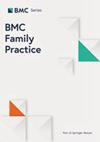Research on the control rate of hypertension under family physician-contracted service
IF 3.2
3区 医学
Q1 MEDICINE, GENERAL & INTERNAL
引用次数: 0
Abstract
Hypertension is one of the global public health problems. Family physician-contracted service (FPCS) is widely used in the health management of hypertension patients in China. The purpose of this study was to assess the effect of FPCS on hypertension control. PubMed, Web of Science, the Cochrane Library, China National Knowledge Network, Chinese Scientific and Technological Journal Database (CQVIP), and Wanfang Database were searched for randomized controlled trials related to family physician-contracted service and hypertension control effect, and meta-analysis was performed on the literature meeting the inclusion criteria. The source of heterogeneity was discovered by meta-regression, and it was further investigated by subgroup analysis. The risk difference (RD) and 95% confidence interval (CI) were utilized as effect values. Evaluations of publication bias and sensitivity analysis were also conducted. A total of 46 studies were included, and the pooled RD suggested that FPCS could effectively improve the control rate by 19% (RD = 0.19; 95%CI: 0.16–0.21; P < 0.001; I2 = 59.3%). The average age (β = 0.28; P = 0.05) and the intervention mode (β = 0.36; P < 0.001) were found to be heterogeneous sources by the meta-regression. According to subgroup analysis, the hypertension control rates of the elderly and working-age population in the experimental group were 93.6% and 90.1%, respectively; the control rates of the “family physician” mode (FP), “family physician + patient” mode (FPP) and “family physician + patient + family member” mode (FPPF) in the experimental group were 90.1%, 94.4%, and 92.6%, respectively. The sensitivity analysis revealed steady results, with no discernible publication bias. The FPCS is beneficial to the control of hypertension. The control effect is influenced by average age and intervention mode. The control effect of hypertension in the elderly is better than that in the working-age population, and FPP and FPPF are more beneficial to the management of hypertension than FP. The quality and continuity of FPCS should receive more focus in the future, patient self-management and family support are also essential for managing hypertension.关于家庭医生签约服务中高血压控制率的研究
高血压是全球公共卫生问题之一。在中国,家庭医生签约服务(FPCS)被广泛应用于高血压患者的健康管理。本研究旨在评估家庭医生签约服务对高血压控制的影响。在PubMed、Web of Science、Cochrane Library、中国知网、中文科技期刊数据库(CQVIP)和万方数据库中检索了与家庭医生签约服务和高血压控制效果相关的随机对照试验,并对符合纳入标准的文献进行了荟萃分析。通过元回归发现了异质性的来源,并通过亚组分析进行了进一步研究。采用风险差异(RD)和 95% 置信区间(CI)作为效应值。此外,还进行了发表偏倚评估和敏感性分析。共纳入 46 项研究,汇总的 RD 显示,FPCS 可有效提高 19% 的控制率(RD = 0.19;95%CI:0.16-0.21;P <0.001;I2 = 59.3%)。元回归发现,平均年龄(β = 0.28;P = 0.05)和干预方式(β = 0.36;P < 0.001)是异质性来源。根据亚组分析,实验组中老年人群和工作年龄人群的高血压控制率分别为93.6%和90.1%;实验组中 "家庭医生 "模式(FP)、"家庭医生+患者 "模式(FPP)和 "家庭医生+患者+家庭成员 "模式(FPPF)的控制率分别为90.1%、94.4%和92.6%。敏感性分析显示结果稳定,没有明显的发表偏差。FPCS 有利于控制高血压。控制效果受平均年龄和干预方式的影响。老年人高血压的控制效果优于工作年龄人群,FPP 和 FPPF 比 FP 更有利于高血压的控制。今后应更加重视家庭病防治的质量和连续性,患者的自我管理和家庭支持对高血压的控制也至关重要。
本文章由计算机程序翻译,如有差异,请以英文原文为准。
求助全文
约1分钟内获得全文
求助全文
来源期刊

BMC Family Practice
医学-医学:内科
CiteScore
3.20
自引率
0.00%
发文量
0
审稿时长
4-8 weeks
期刊介绍:
BMC Family Practice is an open access, peer-reviewed journal that considers articles on all aspects of primary health care research. The journal has a special focus on clinical decision making and management, continuing professional education, service utilization, needs and demand, and the organization and delivery of primary care and care in the community.
 求助内容:
求助内容: 应助结果提醒方式:
应助结果提醒方式:


